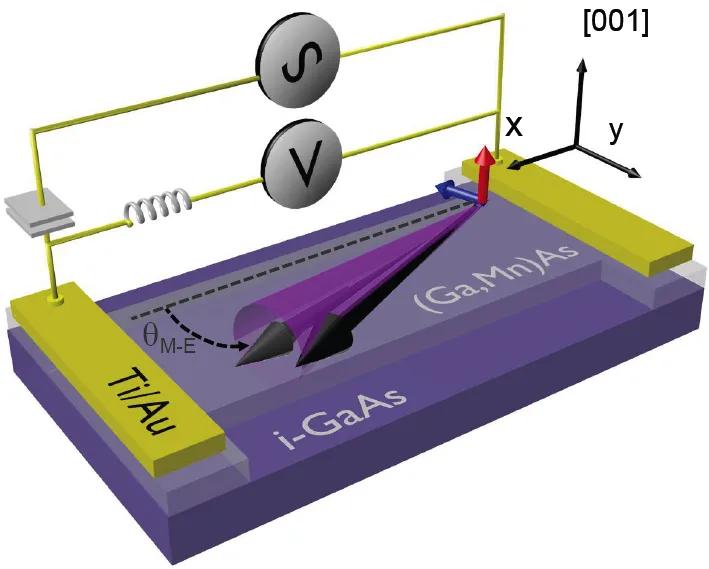Current technologies for writing, storing, and reading information is either charge-based or spin-based. Semiconductor flash or random access memories are prime examples among the large variety of charge-based devices. They utilize the possibility offered by semiconductors to easily electrically manipulate and detect their electronic charge states representing the “zeros” and “ones”. The downside is that weak perturbations such as impurities, temperature change, or radiation can lead to uncontrolled charge redistributions and, as a consequence, to data loss.
Spin-based devices operate on an entirely distinct principle. In some materials, like iron, electron spins generate magnetism and the position of the north and south pole of the magnet can be used to store the zeros and ones. This technology is behind memory applications ranging from kilobyte magnetic stripe cards to terabyte computer hard disks. Since based on spin, the devices are much more robust against charge perturbations. However, the drawback of current magnetic memories is that in order to reverse the north and south poles of the magnet, i.e. flip the zero to one or vice versa, the magnetic bit has to be coupled to an electro-magnet or to another permanent magnet. If instead, one could flip the poles by an electric field without involving another magnet, a new generation of memories can be envisaged combining the merits of both charge and spin-based devices.
Researchers from the Institute of Physics of the Academy of Science in Prague, in collaboration with researchers from Cambridge, Nottingham, and Mainz, have discovered a new physical phenomenon that allows manipulating the state of a magnet by electric fields. The work has been published in the journal Nature Nanotechnology on 2nd March 2014 (DOI: 10.1038/nnano.2014.15).
In order to shake a magnet electrically without involving an electro-magnet or another permanent magnet, one has to step out of the realm of classical physics and enter the relativistic quantum mechanics. Einstein’s relativity allows electrons accelerated in an electric field to order their spins, in other words, to become magnetic. The researchers took a permanent magnet GaMnAs and accelerated some of the electrons inside the permanent magnet by an electric field. These accelerated electrons created a new internal magnetic cloud which was able to shake the surrounding permanent magnet, and the researchers detected that the poles of the permanent magnet moved.
The observed phenomenon is closely related to the relativistic spin Hall effect which the Prague-Cambridge group discovered in 2004 and which since then has become a text-book demonstration how electrically accelerated electrons can magnetize any material, including common semiconductors. “Ten years ago we tried to combine the merits of charge and spin-based devices by turning semiconductors into magnets through the spin Hall effect and now analogous physical phenomenon allows us to also inverse the approach. We start from a magnet and make it sensitive to electric fields. Both approaches are promising for realizing a new generation of memories and it is exciting to be part of the world-wide research and development in this modern field of physics and microelectronic,” says Tomas Jungwirth from the Prague Institute of Physics.
For detailed information contact Tomas Jungwirth from the Institute of Physics ASCR, Cukrovarnická 10, 162 53 Praha 6, e-mail: jungw [at] fzu [dot] cz
